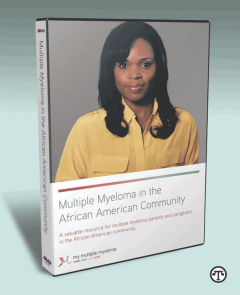 (NAPSI)—While there is hopeful news in the battle against a rare blood disease, challenges remain, particularly in the African-American community.
(NAPSI)—While there is hopeful news in the battle against a rare blood disease, challenges remain, particularly in the African-American community.
That’s the word from experts who say multiple myeloma (MM) is an aggressive and rapidly progressive form of cancer that causes certain white blood cells, normally responsible for combating illnesses, to be overproduced. This proliferation of abnormal cells is known as myeloma cells, and can lead to the growth of tumors that may potentially spread to multiple sites in the body.
During the past 10-15 years, there has been a concentrated effort in developing updated and more effective medical treatments for this disease, which sees an average of 15,000 – 20,000 newly diagnosed cases in the U.S. each year.
As a result, new therapies are providing more effective treatment options for patients, increasing overall survival, in some cases as much as 10 years post-diagnosis. Multiple myeloma, not unlike many cancers, has become more of a managed illness for patients and their caregivers, but the illness is not without one curious health phenomenon: While the incident and mortality rates for multiple myeloma have mostly leveled off, this has not been the case within the African-American community, which has seen significant growth of the disease when compared to Caucasian populations.
As a result, this rare form of blood cancer disproportionately affects African-Americans and is one of the leading causes of cancer deaths among this population. Studies indicate that African-Americans are twice as likely to be diagnosed with this disease versus Caucasians and other ethnic groups, and data also points toward an increased incidence and younger onset of the disease.
Treatment Challenges Still Remain
The causes and reasons for this spike of activity, as well as the racial disparity in incidence and mortality, remain unclear. Various elements such as diet, socioeconomic status, and occupation have been closely studied to determine the root causes of this discrepancy, but nothing conclusive has been drawn.
Although the elevated risk of contracting multiple myeloma is seemingly elevated among African-Americans who live at certain socioeconomic levels and who operate within particular occupations, further research and discussion are required in order to determine the environmental and genetic factors that may determine multiple myeloma.
Additionally, data demonstrates that African-Americans also have a lower rate for becoming potential bone marrow and stem cell donors than other indigenous groups, and are less likely to participate in clinical trials with novel treatments. These facts are disconcerting among public health leaders who shoulder the responsibility to help these patients receive current disease information, but use that data for treatment.
With a clearer understanding of the genesis of the myeloma patient’s condition, the attending physician may suggest the intervention of an oncologist who will make a more accurate cancer diagnosis. It’s critical for African-Americans who experience any type of bone or muscle pain, numbness in their extremities, muscle weakness or infections, including pneumonia, to schedule an appointment with their physician to determine the extent of their condition.
Beyond Treatment—An Informed Black Community
There are a growing number of available resources to African-Americans who are living with MM or those who suspect they may have contracted this blood cancer. Groups such as the Multiple Myeloma Research Foundation, International Myeloma Foundation and Tackle Cancer Foundation are excellent sources for gathering important information about symptoms, treatment options, oncologists and a myriad of data that may impact a future cancer patient.
In fact, one of these resources that is directed at African-Americans and recently became available is an educational DVD co-sponsored by the Tackle Cancer Foundation and Millennium. “Multiple Myeloma in the African-American Community” is an effective resource for patients and caregivers and spearheaded by Kimberly Alexander, who lost her husband, Elijah, to multiple myeloma.
“My desire to stay educated about multiple myeloma didn’t end when my husband lost his battle with cancer due to complications from the disease. I will forever be concerned about the possible implications this may have for our children, grandchildren and future generations. Because I know the incidence rates of multiple myeloma within the African-American community, my wish for a cure goes beyond doing something in memory of my husband; it could be the difference maker for our family for years to come.”
Millennium’s involvement within this community has been ongoing and has identified outreach to the African-American community through its Patient Advocacy group. According to Kathy Gram, who is part of the company’s patient advocacy leadership, “We have African-American multiple myeloma patient ambassadors and caregivers tell their stories to the African-American community to offer hope, inspiration and the importance of clinical trial participation.
“The ambassadors also encourage MM patients to seek second opinions from an MM specialist and find a patient support group in their area. They are also reaching out to both the national office of minority health care and the state offices to identify channels for education and awareness.”
More Information Needed
Oncologists and other health care professionals involved in the treating of myeloma patients and those scientists challenged with developing future treatments—and possibly a cure—agree that there is a need for more information when it comes to understanding the impact of this disease on African-Americans.
There also remains a need for community education programs to educate this population about its risks for developing MM and the benefit of clinical trials so that they may better understand this new information and apply it to their lives.
For more information, visit www.mymultiplemyeloma.com.

